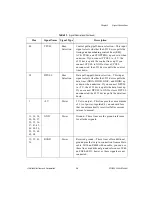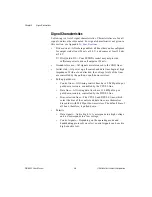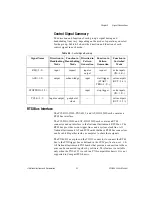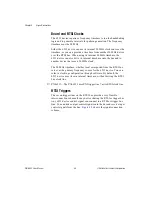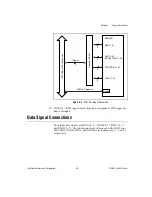
Chapter 4
Signal Connections
DIO 6533 User Manual
4-8
© National Instruments Corporation
Board and RTSI Clocks
The 6533 device requires a frequency timebase to run the handshaking
logic and to generate intervals for pattern generation. The frequency
timebase must be 20 MHz.
Either the 6533 device can use its internal 20 MHz clock source as the
timebase, or you can provide a timebase from another 20 MHz device
over the RTSI bus. When using its internal 20 MHz timebase, the
6533 device can also drive its internal timebase onto the bus and to
another device that uses a 20 MHz clock.
The 20 MHz timebase, whether local or imported from the RTSI bus,
serves as the primary frequency source for the 6533 device. You can
select a clocking configuration through software. By default, the
6533 device uses its own internal timebase, without driving the RTSI
bus clock line.
♦
PXI-6533—The PXI-6533 uses PXI trigger line 7 as its RTSI clock line.
RTSI Triggers
The seven trigger lines on the RTSI bus provide a very flexible
interconnection scheme for any device sharing the RTSI or trigger bus.
Any 6533 device control signal can connect to a RTSI or trigger bus
line. You can drive output control signals onto the bus and receive input
control signals from the bus.
shows the signal connection
scheme.












